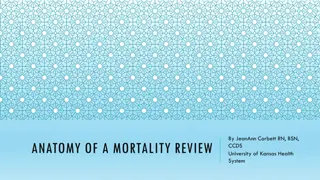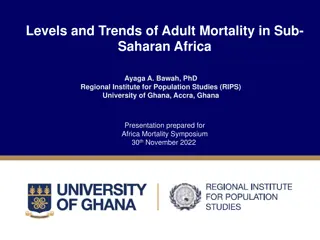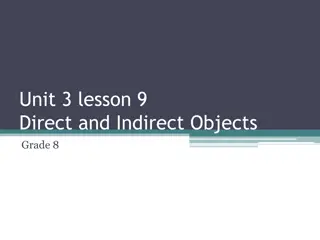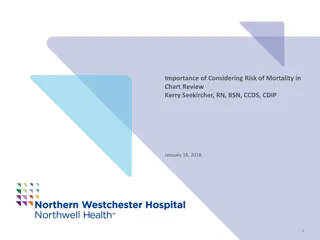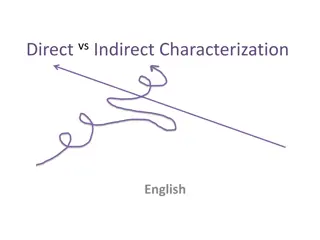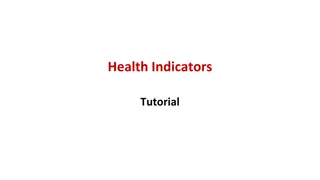Exploring Indirect Estimation Methods for Child Mortality
Delve into the Brass method and variants for estimating child mortality, utilizing indirect estimation methods through birth histories and data correction. Discover how analyzing birth histories and applying model life tables aid in estimating mortality trends.
Download Presentation

Please find below an Image/Link to download the presentation.
The content on the website is provided AS IS for your information and personal use only. It may not be sold, licensed, or shared on other websites without obtaining consent from the author. Download presentation by click this link. If you encounter any issues during the download, it is possible that the publisher has removed the file from their server.
E N D
Presentation Transcript
Indirect estimation of child mortality Introduction The Brass method for estimating child mortality Variants of the Brass method
Indirect estimation methods Methods for evaluating data quality allow to correct the data Can calculate corrected mortality indicators based on adjusted data Sometimes it is not possible to apply these methods, because data not available or difficult to correct Indirect methods: use of alternative sources of information
Indirect estimation methods Child mortality Adult mortality Child mortality methods work better than adult mortality methods Focus here on child mortality
Birth histories Birth histories Sample of women aged 15-50, interviewed in a survey Asked to report: Date of birth for each live birth Current survival status of each live birth (alive/dead) If dead, date of death Available in DHS Specific methods for analyzing birth histories
Summary birth histories Brass method Women aged 15+ asked: How many children ever born How many children still surviving No question on dates of birth and death Available in: Censuses Sample surveys (DHS, MICS)
Summary birth histories Age of mother taken as indicator of how long ago births occurred Births among women aged 20-24 occurred more recently, on average, than births to women aged 40-44 Produces estimates of q(1), q(2), q(3), q(5) and q(10) Can be used with model life tables to estimate trends in q(5)
Illustration Assume following life table in the population:
Illustration Assume all childbearing takes place at exact age 19.5:
Illustration Now assume that fertility is more spread out in age Proportion children dead for women aged 25.0 (d25) and its correspondence with death probability:
Illustration Now assume that past births are evenly distributed for these women: d25 = 30.6/200 = .153 = q(2.3)
Logic of method Proportion of dead children reported by women aged x is affected by both the level of mortality and the time distribution of past births The Brass method converts proportion of reported children dead into death probabilities after correcting for distributional effect Calculation of correction factors (k) based on reported age pattern of fertility Estimation of reference date for each death probability
Biases Less potential for reporting errors than full birth histories, because no dates or ages are asked about children Still potential for omission, age misreporting of mothers Assumption that fertility has been constant in the past q(1) usually too high (based on reports from women aged 15-19 many first births with high mortality) Issues of representativity, selective mortality
Variants of Brass method By duration of marriage Births last 12 months Most recent birth Preceding birth










